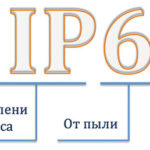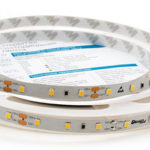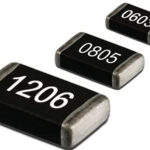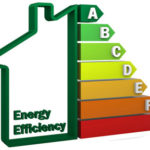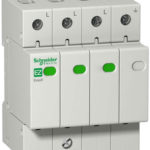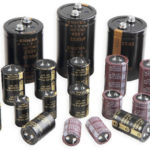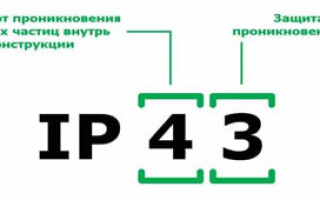On the surface of electrical appliances, sockets, lighting fixtures you can often see the designation with the letters IP. What they mean and what they are used for, seldom people think or do not pay any attention to. In fact, this simple designation means the level of IP protection against external influences and should be consistent with the requirements of the State Standard and the regulations for the installation of electrical equipment.
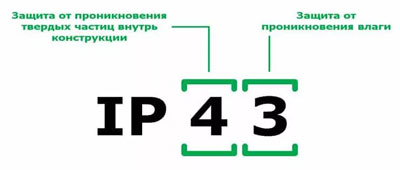
Contents
What is the protection rating
Most electrical appliances or equipment powered by electricity are placed in a housing that protects them from the effects of foreign objects, fingers, water and dust. In order to determine this degree, special tests are carried out, the results of which are presented as numbers followed by English letters.
Deciphering the degree of protection
Translated from the English abbreviation IP - International Protection, it means the level of protection against penetration, or other effects (dust and moisture protection). In addition to the letters, the marking is also accompanied by two numbers. The digital designation defines the level of protection of the enclosure (shell) of electrical equipment against the penetration of dust, fingers, moisture, various solid objects. In addition, they indicate the level of protection against electric shock to a person when touching the enclosure (shell). This classification is regulated by GOST 14254-96.
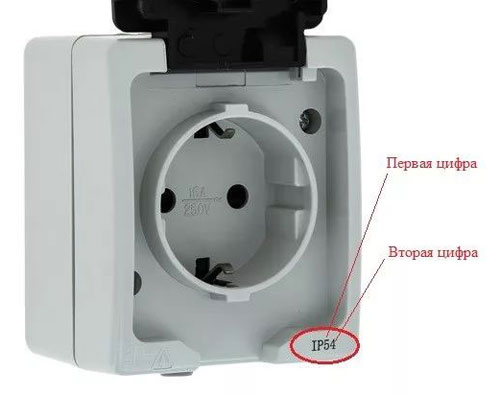
The first digit
The level of protection against mechanical impact is determined by the first digit:
- prevention, restriction from touching or penetration by any part of the body or an object in the hands of a person;
- blocking access under the shell of dust, solid objects to protect electrical equipment.
Second digit
The level of protection against harmful effects of moisture is determined by the second digit.
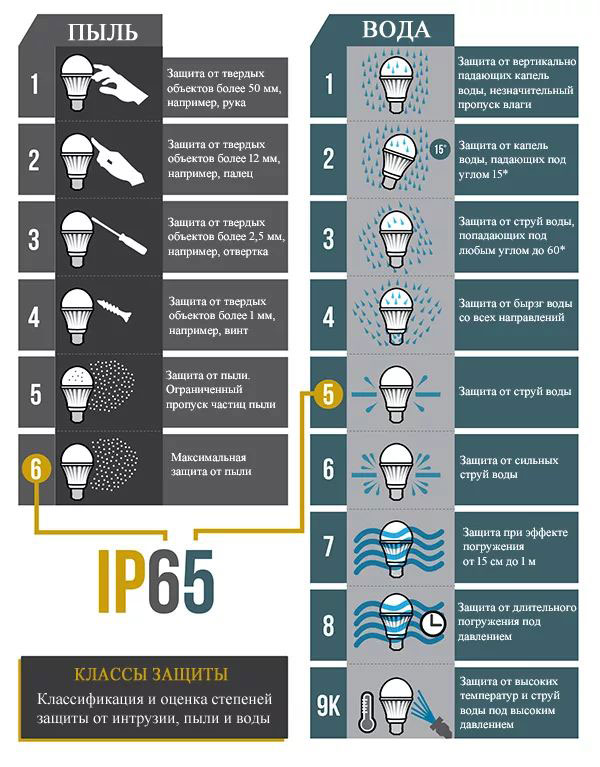
Additional symbols
After a pair of digits, sometimes a pair of letters may appear. The first indicates the degree of protection against contact with hazardous parts of the equipment and electric shock:
- A - against contact with the hand;
- B - finger contact;
- C - from contact with various tools;
- D - from contact with a wire.
The second is auxiliary information about the level of protection. There are four of them in total. They indicate information about the tests performed and are necessary for electrical equipment:
- H - high voltage apparatus;
- M - tested according to the protection level against the negative influence of water (equipment in motion);
- S - tested according to the protection level against the harmful effect of water (equipment at rest);
- W - with additionally indicated protection means.

Table of deciphering of code values
| 1-digit | Protection against foreign solid objects | 2-digit | Protection against moisture |
|---|---|---|---|
| no protection | no protection | ||
| 1 | Against solid objects larger than 50 mm; body parts, hands, feet, etc. or other objects of at least 50 mm in size. | 1 | Against vertically falling drops |
| 2 | From solid objects larger than 12 mm; fingers | 2 | From drops falling vertically at an angle not exceeding 15° |
| 3 | From solid objects more than 2.5 mm; plumbing tools, wire | 3 | From droplets falling at a 60° angle to the vertical |
| 4 | Against objects of more than 1 mm; wire and other objects of at least 1 mm. | 4 | Against drips and sprayed water striking at all angles. |
| 5 | Partial protection against dust and full protection against all penetrations. | 5 | Protected against spray from all angles. |
| 6 | Complete protection against dust and accidental ingress. | 6 | Protected against pressure jets. |
| 7 | Protected against falling into water without causing damage. | ||
| 8 | Protected against being submerged in water for an unlimited period of time. |
Example decryption
Common designation IP54. The table shows that the enclosure is dustproof and fully resistant to splashing at any angle and does not allow touching live parts with hands or tools.
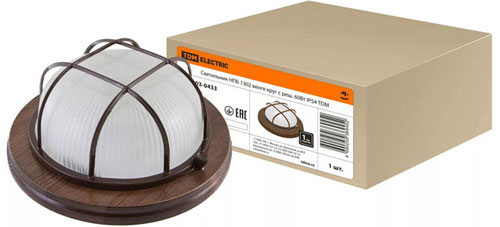
The most common protection levels
- IP20 - the marking means that the enclosure of electrical equipment is protected against foreign bodies of 12,5 mm or more (see table). There is no protection against moisture, the switchboard is installed in a dry room, and there is no mechanical impact. Conclusion - the switchboard, installed in the hall or living room of the house (apartments);
- IP30 - It is not protected against moisture but it has a higher degree of protection against mechanical influences from objects of 2,5mm;
- IP44 - IP44 means that the electrical equipment is protected against mechanical impact of objects from 1mm and against splashing at any angle. Installed indoors with humidity in the vicinity of tools, machine tools.
- IP54 - marking means the difference from the 44 os partial dustproof and full protection from foreign objects. Installed outdoors and indoors without open water spray and dust generation.
- IP55 - enclosure of such equipment is protected from mechanical interference and partially from dust. Withstands jets of water. Recommended for outdoor installation without a canopy. Can be installed in any place of household plot.
- IP65 - The housing is dust-proof and can be installed both outdoors and indoors.
IPX7 degree of water protection
IPX7 - among eight degrees, is the second-highest degree of protection against moisture. A device with this designation can be kept under water at a depth of about one meter without losing its performance. Now many devices have this degree of IP, including some models of phones.
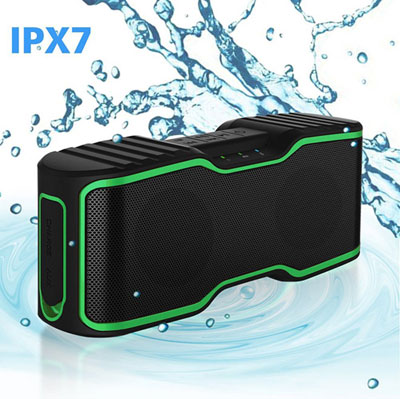
Which protection class of electrical equipment to choose for your home
For rooms where water is not used (bedrooms, living roomsUsually it is enough to use standard sockets, lamps and switches IP22, IP23. Moisture will not be there, and direct contact with live parts, too. In children's rooms, it is desirable to install outlets at least IP43 with a special cover or curtains.
For the kitchen, bathroom - rooms where there is water, splashing, IP44 class is suitable for both outlets, switches and lamps. The same applies to sanitary units. On balconies, loggias there is dust and moisture. It is recommended that electrical equipment of at least IP45 and IP55 class be installed. When there is a basement in the house, it is also recommended to install electrical equipment no lower than IP44.
Outlets and fixtures for the bathroom
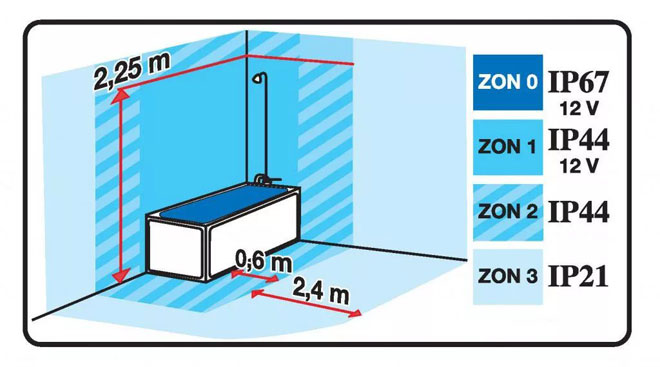
According to the norms of the State Standard, it turns out that for bathrooms, you need to select lights, sockets and switches class at least IP44. Sockets of this class are equipped with automatically closing flaps. The plugs should also be of the same class. Since steam and moisture evaporate upwards, wall light fixtures should be rated IP65.
Faced with the choice of purchasing a new electrical appliance, the question arises - what class of protection should it be? In order to determine which electrical appliance should be installed in a particular room, you need to look at the alphanumeric code and just check with the table presented in this article.
Related articles:
